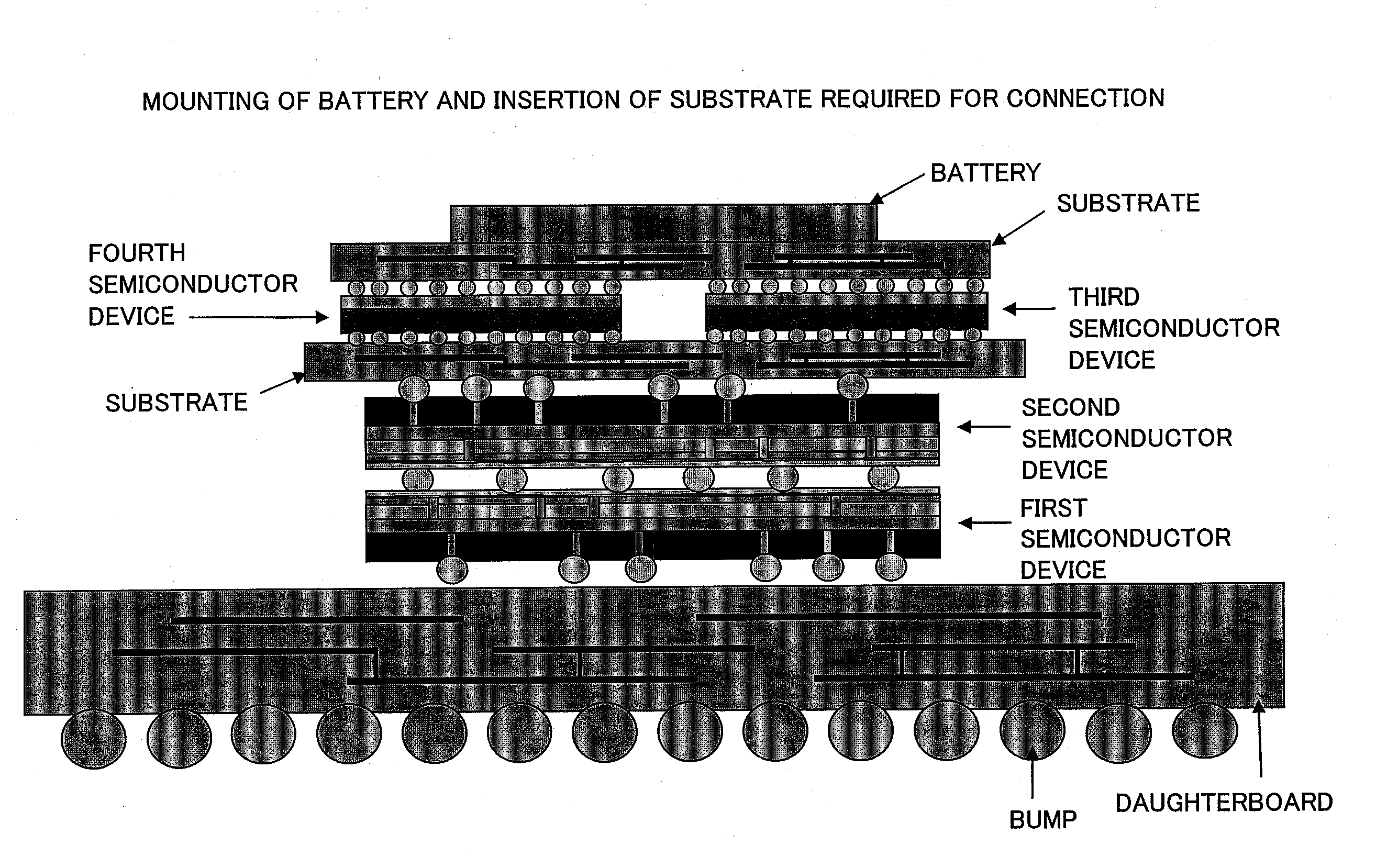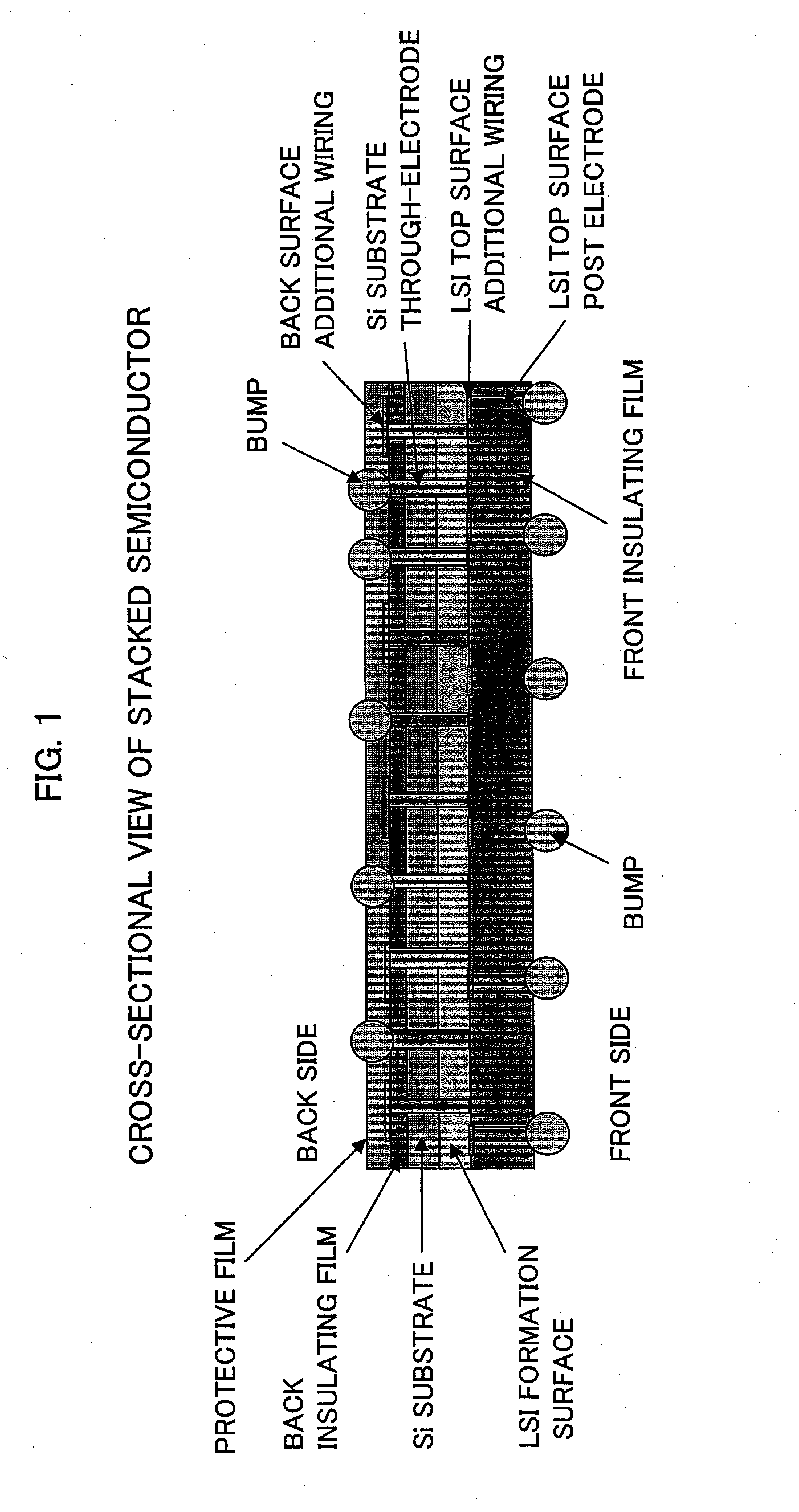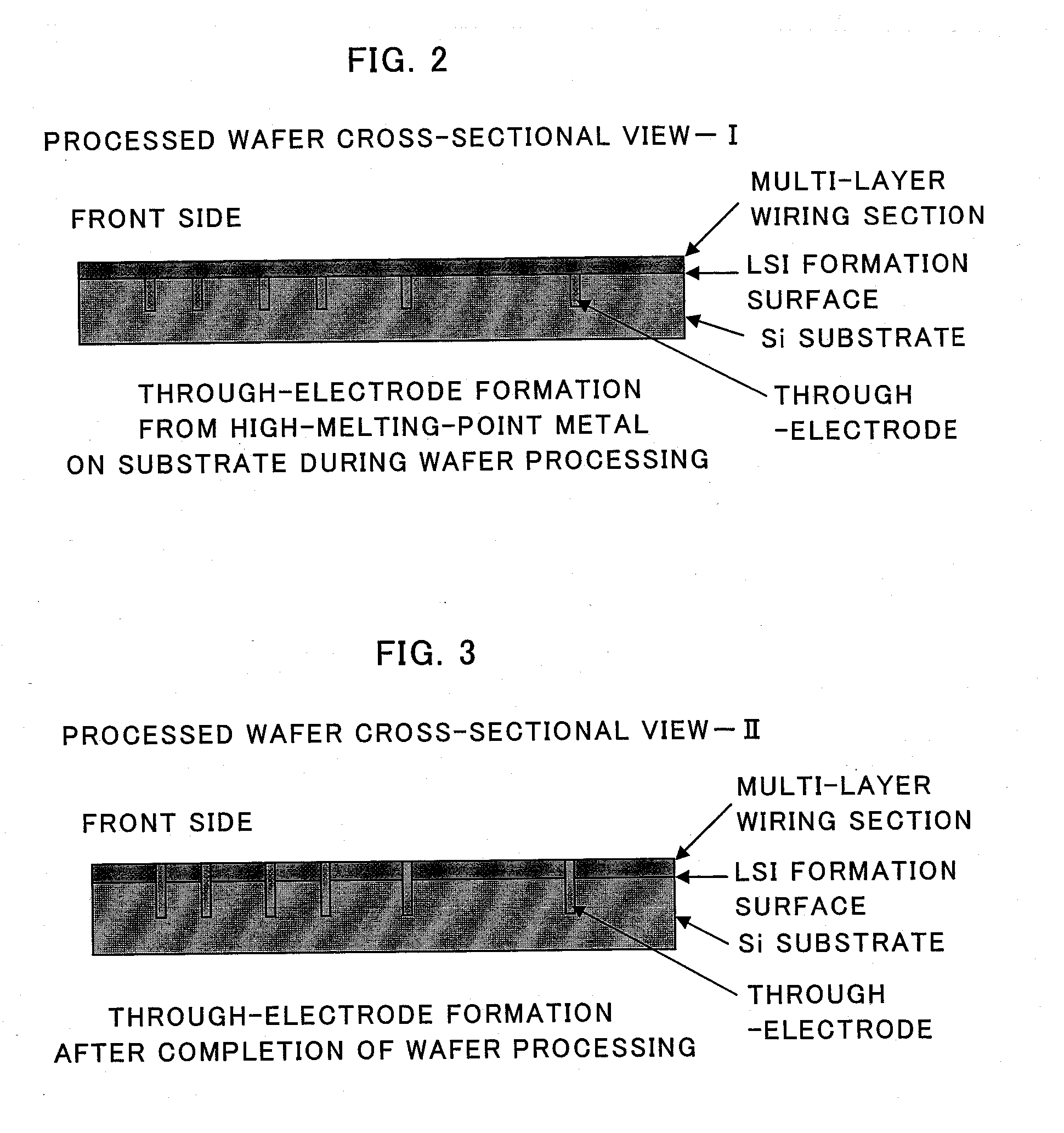Packaged Stacked Semiconductor Device And Method For Manufacturing The Same
a semiconductor device and packaging technology, applied in semiconductor devices, semiconductor/solid-state device details, electrical equipment, etc., can solve the problems of difficult to apply to a semiconductor device mounting process, difficult to form through-electrodes, and conventional techniques that do not disclose wiring on the back surface of three-dimensional stacked semiconductor devices, etc., to achieve the effect of reducing the height of the semiconductor device, reducing the degree of freedom in terms of combination, and low cos
- Summary
- Abstract
- Description
- Claims
- Application Information
AI Technical Summary
Benefits of technology
Problems solved by technology
Method used
Image
Examples
Embodiment Construction
[0053] Before description of the present invention, a three-dimensional stacked semiconductor device which has been previously applied by the present inventors (Japanese Patent Application No. 2003-370651) will be described with reference to FIGS. 29 to 31. FIG. 29 is a cross-sectional view showing the three-dimensional stacked semiconductor device; FIG. 30 is a schematic perspective view showing the entirety of the device; and FIG. 31 shows the bottom surface of the device. As shown in FIG. 29, the three-dimensional stacked semiconductor device includes a first semiconductor device 2 which serves as a bottom unit; a third semiconductor device 4 which serves as a middle unit and is provided and fixated onto the top surface of the first semiconductor device 2; and a second semiconductor device 3 which serves as a top unit and is provided and fixated onto the top surface of the third semiconductor device 4.
[0054] In description of the first, second, and third semiconductor devices 2,...
PUM
 Login to View More
Login to View More Abstract
Description
Claims
Application Information
 Login to View More
Login to View More - R&D
- Intellectual Property
- Life Sciences
- Materials
- Tech Scout
- Unparalleled Data Quality
- Higher Quality Content
- 60% Fewer Hallucinations
Browse by: Latest US Patents, China's latest patents, Technical Efficacy Thesaurus, Application Domain, Technology Topic, Popular Technical Reports.
© 2025 PatSnap. All rights reserved.Legal|Privacy policy|Modern Slavery Act Transparency Statement|Sitemap|About US| Contact US: help@patsnap.com



